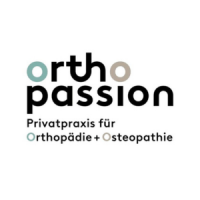The spine consists of 24 vertebrae and 23 intervertebral discs. These consist of a stable but elastic fibrous ring (annulus) and a gelatinous core (nucleus). The nucleus pulposus is a water-storing cushion and absorbs stresses on the spine.

Intervertebral discs are not permeated by blood vessels. They receive their nutrients via tissue fluid. When we move, we squeeze the intervertebral discs like sponges. If we then relieve them, they soak up the nutrient-rich fluid.
In a herniated disc, the gelatinous nucleus breaks through the fibrous ring of the disc and presses on the surrounding nerves. The pressure on the nerves causes the pain.

© Henrie / Fotolia
In the video you can see the process of a herniated disc:
A herniated disc can occur in any section of the spine. It often occurs in the lower lumbar spine(lumbar disc herniation) and in the cervical spine(cervical disc herniation).
Doctors name herniated discs according to their location in the spine: LWK5/SWK1, for example, refers to damage to the lumbar spine in the segment between the 5th lumbar vertebra (L5) and the first coccygeal vertebra (S1).
Intervertebral disc damage can occur in various forms:
- Incipient protrusion
- Progressive protrusion
- Herniated disc
- Sequestration

© bilderzwerg / Fotolia
In the case of an advanced disc protrusion, the fibrous ring is still intact. However, the altered shape of the disc presses on the surrounding tissue and spinal nerves that emerge from the spinal cord. A protrusion can be easily reduced with conservative treatment.
In a sequestrum , the fibrous ring is ruptured and the gelatinous nucleus protrudes from the disc. A sequestrum does not necessarily have to be operated on. Patients should discuss the pros and cons of surgical and conservative treatment with a specialist doctor.
In the case of a herniated disc, the tissue damage causes severe immobilizing pain. This pain often radiates to the extremities. Neurological discomfort is also common :
- Tingling
- Heat or cold without external causes
- numbness
The pain often occurs during exertion. The pain often forces the patient into a pain-reducing posture.
The clinical symptoms and the medical history interview provide initial indications. This is followed by a physical and neurological examination.
To clarify the suspicion of a herniated disc, however, diagnostic imaging is absolutely essential.
The treating doctor will find indications of changes in the bony structures and also degenerative processes in the X-ray image. Magnetic resonance imaging (MRI) is the first choice for diagnosing and planning further treatment for a herniated disc . This can show the soft tissue components and thus a herniated disc.

Magnetic resonance imaging © digitale-fotografien / Fotolia
A herniated disc usually has a long, unnoticed history. In most cases, the intervertebral disc gradually becomes more and more damaged until it finally prolapses.
Intervertebral discs dehydrate and become brittle due to
- Ageing
- Lack of exercise
- An unbalanced diet
- Smoking
Muscle imbalances, untrained muscles and unfavorable movement patterns, in addition to obesity, put a lot of strain on the intervertebral discs.
The video shows a possible course of intervertebral disc degeneration with consequential damage:
A slipped disc is a neurological disease with an orthopaedic background. It therefore exhibits symptoms from both areas.
There are three main causes of a herniated disc:
- a congenital weakness of the disc tissue and connective tissue,
- a sudden "twisting movement" of the trunk with heavy lifting or pushing,
- Obesity with muscle imbalances, which together represent an incorrect load on the spine.
A slipped disc often occurs when lifting a heavy crate of drinks with a bent spine. This often involves twisting to place the crate in the trunk. This puts a lot of pressure on the intervertebral discs, which give way under the load. Poor muscle condition and being overweight increase the risk. Smoking also weakens the intervertebral disc tissue.

© #CNF / Fotolia
The first thing to do immediately is to take the stepped position . Lie on your back with your legs raised at a 90° angle . Special foam disc cubes are available for this. A padded box, a stool or a chair will also suffice. This position creates space between the vertebrae and relieves the compressed tissue.
You can use this first aid for a slipped disc flexibly in bed or on a yoga mat. It is important that the spine lies flat and that you can breathe calmly and deeply. A hot water bottle can also help you to relax. To get up from a lying position, roll over your side to protect your back and stand up with support.
Avoid lifting heavy loads at all costs. See the right doctor as soon as possible .

Step positioning for herniated disc © C.Schüßler / Fotolia
Specialists for herniated discs are orthopaedists, spinal surgeons or neurosurgeons. These specialists diagnose a herniated disc through a physical examination and MRI scan and treat it.
Severe cases may require the cooperation of several specialists. As a herniated disc affects the nerves, the orthopaedist will consult a neurologist, for example. If surgery is required, a spinal surgeon will be consulted. They usually have specialist training in orthopaedics and trauma surgery or neurosurgery.
Specialists for herniated discs have undergone many years of training. Prospective specialists must have worked for several years as a training assistant - for example in a specialist orthopaedic clinic.
A slipped disc is not always automatically a case for the surgeon. In fact, doctors and therapists can treat herniated discs conservatively. A herniated disc is associated with pain, nerve compression and inflammation. The doctor must eliminate these three factors. In this way, the patient breaks out of the pain cycle and the symptoms do not become chronic.
The healing phase takes several weeks to months. In the case of a protrusion, the deformed fibrous ring returns to its original shape. The body itself breaks down any disc mass that has already been expelled. 90% of all herniated discs are successfully treated in this way.
Conservative treatment of herniated discs
Sometimes it is sufficient to rest the back for two weeks after a slipped disc with gentle mobilization. You should avoid heavy lifting. You should then start to strengthen your abdominal and back muscles. A physiotherapist should make sure that you choose and perform the exercises correctly. If you have a slipped disc, your doctor will usually prescribe physiotherapy. Rehabilitation sport is also used depending on the symptoms.
Medication helps to relieve pain, severe muscle tension and inflammation. The doctor also prescribes anti-inflammatory and decongestant medication from the group of NSAIDs (non-steroidal anti-inflammatory drugs). These include the active ingredients diclofenac and ibuprofen. Preparations containing the active ingredient methocarbamol, for example, are suitable as muscle relaxants - these are only available on prescription. NSAIDs should always be taken with appropriate gastric protection.
Another treatment option is injection therapy. Here, the doctor injects the pain medication directly into the irritated nerve or the small vertebral joints, the so-called facet joints. The video shows how pain therapy with a radiofrequency probe works:
The aim of drug treatment is to relieve pain so that the irritated tissue around the intervertebral disc can recover. This allows you to carry out physiotherapy exercises more effectively and eliminate postural restraint.
With conservative treatment of a herniated disc, it takes 3 to 6 weeks to achieve initial pain relief. It can take several months for the disc damage to heal completely.
Surgical therapy: disc surgery
Thereshould be animprovement after 6 to 8 weeks . If this is not the case or if there is significant numbness or muscle weakness (weakness in lifting the foot), disc surgery may be necessary. The surgeon weighs up the benefits and risks carefully with the patient.
The principle of an intervertebral disc operation is to end the pain-inducing nerve compression. To do this, the doctor removes the leaked and, in some cases, separated gelatinous mass from the disc nucleus.
Surgery can be performed endoscopically or openly, i.e. microsurgically, using a surgical microscope under general anesthesia
The microscope enables the surgeon to see the protruding bone of the vertebral body more precisely and, if necessary, to partially remove it. The doctor and patient decide together which surgical procedure is suitable and makes the most sense in each individual case.

Pain is the main symptom of a herniated disc. In some cases, symptoms of paralysis and sensory disturbances are also present. However, the question should not be how long this pain lasts. It is more a question of how long the patient has to live with this pain.
If the pain lasts longer than 6-12 weeks, surgery must be considered. This is to prevent chronic pain.
After conservative treatment of a herniated disc, the patient is unable to work for 4 to 12 weeks. The duration depends on the severity of the clinical picture and how effective the conservative treatment is.
In the case of disc surgery, the patient is hospitalized for a few days. This can be followed by rehabilitation measures .
In the first week after disc surgery, the patient should take it easy. Nevertheless, they should take a few steps every day. Immediately after the operation, the patient must wear a special support corset.

The patient can start physiotherapy after about one to three weeks.
A further follow-up examination is necessary after three months - either in the clinic or with a back specialist of your choice. At the check-up after three months, a muscle test is carried out. If the muscles are not strong enough, a special training program will help.
Herniated discs are often caused by disc wear and tear. This depends on a number of lifestyle factors that you can change by taking preventive measures. This will slow down the wear and tear and possibly prevent another herniated disc.
It is particularly important to maintain a normal weight. Excess weight and lack of exercise put strain on the spine and also on the intervertebral discs. This accelerates disc degeneration and makes a slipped disc more likely.
You can support a healthy body weight through gentle sports. These include swimming, cycling and Nordic walking. These sports bring movement and activity into your life. At the same time, they strengthen your back and help it to cope better with everyday stresses and strains. With this combination, you can better prevent another slipped disc.


























































